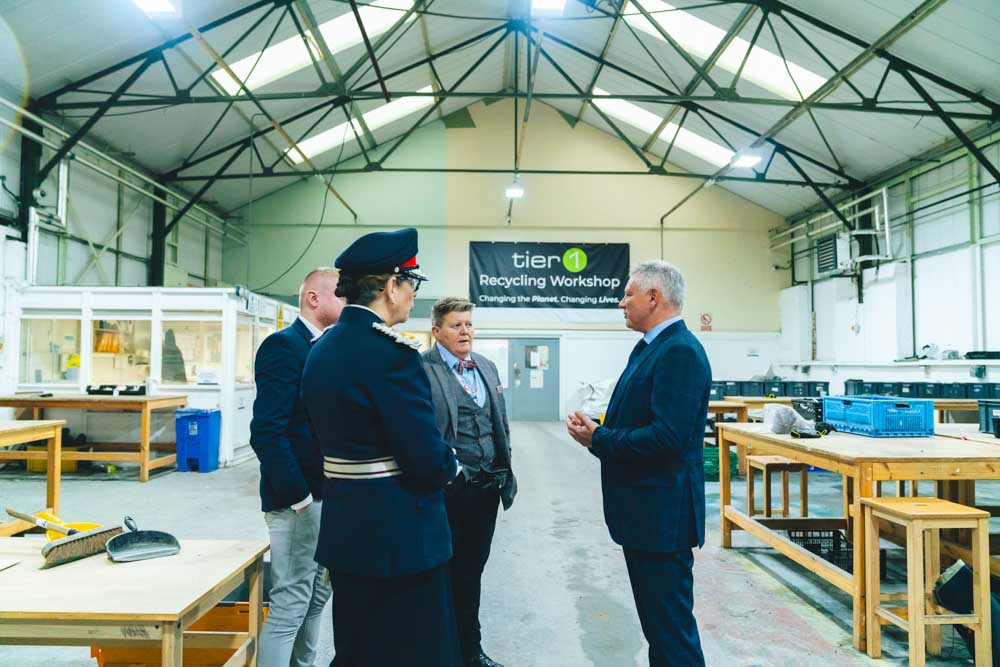The cloud may appear to be a never-ending, limitless entity, but the physical infrastructure that creates the cloud and the energy that’s needed to power it is having a huge, yet almost invisible impact upon our environment.
Whether it’s clicking a link, googling or streaming video content, every action we take online creates data; data that requires energy, the vast majority still produced by fossil fuels.
The convenience and scalability of the cloud is certainly beneficial for businesses – if we’re running out of storage, we simply buy more. This requires enormous amounts of power to maintain. Consequently, as our data storage requirement expands, so does the need to build more data centres and generate more energy to power them. Considering that the internet is not even 40 years old as yet, where will we be in the next forty years?
It is predicted that by 2025, the technology sector will consume 20%
of the world’s total electricity – an increase from today’s 7%.
Greenpeace.
With a bigger carbon footprint than the entire aviation industry, data centres currently chomp through around 2% of the world’s electricity – that figure is expected to rise to 8% by 2030 due to the increase in cloud and AI technology.
Following their recent research, market analysts IDC+ report that by 2025, the world will have generated more than 11 zettabytes of data. Sound a lot? – one zettabyte is equal to 1,000,000,000,000,000,000,000 bytes or a trillion gigabytes^. Vast figures that will only increase as our usage does.

How does the cloud impact climate change?
Data centres either need to be located in a country with a cold climate or have their temperature constantly maintained by around-the-clock cooling provided by power-thirsty air conditioning. As you might expect, the latter is more common.
Studies indicate that cooling accounts for a substantial 40% of a data centres total energy use. When an exact same server is built in a warmer country, that percentage surges to a whopping 80%.
However, the impact on our environment isn’t only a result of high-energy consumption. Servers contain chemical coolants to prevent the system overheating. They all have battery back up’s that kick in if there is a power outage. Irresponsible disposal of our e-waste results in toxic chemicals leaching into our soils and waterways.
Our servers also contain precious metals, including gold, silver, copper, aluminium, iron and steel to name a handful. Of course, this is extremely wasteful, but it unnecessarily increases demand for mining of finite virgin materials to produce more tech and the lithium-ion batteries within them. This excludes the greenhouse gas emissions generated from production itself and transportation often from eastern Asia’s manufacturers.
The benefits of cloud data storage?
Scalable digital storage is here to stay. It offers huge advantages for business – facilitating remote collaboration, streamlining processes, improving efficiency, reducing the need to commute or travel for meetings and a new hybrid working culture.
Helping to protect your company data, the cloud provides advanced storage security, ensuring you meet your obligations under EU and UK GDPR – the cloud’s-back up facility offering reassurance when it comes to your business continuity plan.
As organisations recognise the cost-effectiveness versus building, operating and maintaining an in-house server, mass cloud-migration is contributing to the rapid growth of the cloud.
With this expansion in mind, what can be done to reduce the environmental impact?

How do we reduce the environmental impact of our data storage?
The three largest cloud providers, Amazon, Microsoft and Google have all faced criticism for their response to sustainability concerns.
A damming Greenpeace report in 2019, accused Amazon of failing in its commitment to 100% renewable energy. Amazon have since reiterated this commitment, pledging to achieve net-zero by 2040.#
That said, substantial progress has been made. Google has proudly been carbon neutral since 2007 through use of 100% renewable energy and carbon offsetting – in the last 12 years, they have offset over 19 million metric tons of CO2 equivalent. The company has invested $600m into greener initiatives including evaporative cooling systems and smart temperature controls. Their goal is to reduce their energy by 50% less of the industry average, custom building servers that consume less power.
Given the scale of future digital tech growth, these approaches will need to combine with other solutions:
Emerging data storage technologies
In an effort to improve their sustainability reputation, Microsoft has dramatically reduced their cooling energy by submerging server racks in specially designed coolant fluids. Importantly, this has led the way for research into the potential for sub-sea data centres, powered by renewable offshore energy farms.
Fujifilm is currently investigating the alternative of tape storage as another potential solution. As the tape itself generates no heat, it could provide a greener form of storage, although the hardware required would need power.
Locate in cooler climates
Whilst it may not be a practical solution to physically move hundreds of data servers around the globe to cooler climates, commissioning new centres in cold regions would create less impact. This sounds simple in theory, but this approach doesn’t’ always work – many countries legislate that their citizens data must be stored domestically.
Reduce data quantity
One duplicate file takes up twice the storage and generates twice the costs. You are paying to store it, so it’s worth prioritising regular data audits.
Similarly, incomplete or ‘dirty data’ holds no value to your company. Data quickly becomes obsolete. 25% of the average organisations corporate data is inaccurate^. Manual data cleansing in uneconomical and time-intensive, but deduplication software can delete thousands of multiple files; freeing up valuable space – In fact, deduplication has been shown to reduce the need for storage by up to 90%. It could save your organisation thousands.
Compression applications can also help with data reduction by finding and deleting repeated bytes; working particularly well for databases, emails and digital files. Depending on the level of security required, reclassifying data into different tiering categories can help also. Whilst no more space is created, it reduces the amount of high-level storage, and therefore the energy needed for the server where is it resides.
Data centre decommissioning
After deleting worthless data, corporations may be left with excess server capacity. Also, many have either fully or partly migrated to the cloud, increasing server space. Unused data centre floor space still consumes power and costs money so businesses are downgrading or decommissioning entire servers.
When servers become redundant IT assets, environmentally friendly ITAD will provide secure, sustainable data centre decommissioning and big data ITAD. Perfectly serviceable components, such as those precious metals can be reused, contributing to the circular economy. With expert knowledge of the market, IT asset disposal companies will secure the best price, providing you with the residual value for the components.
Professional data erasure services issue an IT asset disposal accreditation certificate for each asset, providing a full ITAD chain of custody. Data centre decommissioning need not cause disruption to the business with on-site data erasure, ensuring business continuity.

Most companies want to combat climate change, the ‘reduce, reuse, recycle’ culture is gathering pace when it comes redundant IT equipment or end of life IT assets. But many either do not consider or hugely underestimate the carbon footprint of their data storage.
Businesses should consider whether their provider delivers high environmental standards as part of their own sustainability policy. To meet the demands from increasingly ethical businesses, it’s vital that the tech giants invest in next-generation storage, cooling technologies or cooler locations to meet the anticipated growth.
Whilst cloud computing is more energy efficient than the alternative and provides a host of business benefits and economic growth, the environmental impact must be considered and solutions found to make our data storage more sustainable.
tier1 provide a comprehensive environmentally friendly ITAD and data destruction, helping businesses avoid any future data security issues.
Our secure office relation and on-site data centre decommissioning services ensures that disruption is minimal – ask us about our out of hours service.
Find out how our data wiping services can support your organisation – contact us on 0161 777 1000 or visit tier1.com
Resources.
Cazoomi, earth.org, Forbes, Greenpeace, Tech Radar, Tech Target, The Register, Towards Data Science,



